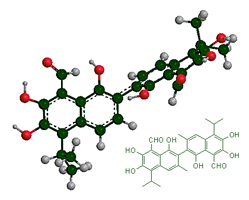
 |
|---|
| Introduction | |
Plant secondary metabolites play an important role in plant adaptation, including mediating plant-insect interactions and protecting plants against pests and pathogens, some are used in medicine or other areas. Terpenoids are derived from the isoprenoid pathway. We are interested in characterization of the gossypol biosynthetic pathway in cotton (Gossypium spp.) and the biosynthesis of active components in medicinal plants (such as tanshinones in Salvia spp. and artemisinin in Artemisia annua), and the RNA metabolism in biointeractions. With the rapid development in multiomics and chemical analysis, comparing the variations in related species may result in finding new features of metabolism, as well as valuable traits of plant defense. Cotton fiber is the most important natural fiber for textile industry and we investigate the regulatory mechanism controlling fiber cell development. Click Research Fields to learn more. |
 |
| Platform | |
.jpg) |
Our laboratory is well equipped. Instruments and tools for routine molecular biology experiments, tissue culture and plant transformation are available. In addition, we have a good collection of medicinal plants of Salvia, family Lamiaceae. |
| Achievements | |
We have achieved important progresses in plant secondary metabolism and agricultural biotechnology. We characterized the gossypol pathway in depth, with findings or unique catalytic mechanisms. We developed the plant-mediated RNAi technology for insect pest control. We identified and characterized the molecular mechanisms linking the plant development and hormone signaling factors to the regulation of secondary metabolism, and we cloned key regulators of cotton fiber elongation and secondary cell wall biosynthesis. Our research has resulted in more than 120 publications (see Publications) and dozens of patents. |
.jpg) |
| Projects | |
.jpg) |
Currently our research projects include: (1) Biosynthesis of terpenoids in cotton and medicinal plants (Salvia, Artemisia, Tripterygium), biochemical and chemical reactions in extracellular and intracellular space; (2) Plant-insect interactions at the RNA level; (3) Regulation of cotton fiber development with emphasis on fiber cell elongation; (4) Germplasm innovation of medicinal plants (Salvia, etc.). |
Copyright 2024-2024 © Group of Plant Secondary Metabolism and Cotton Biology All Rights Reserved. |